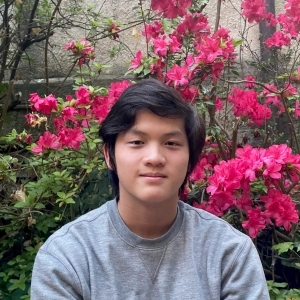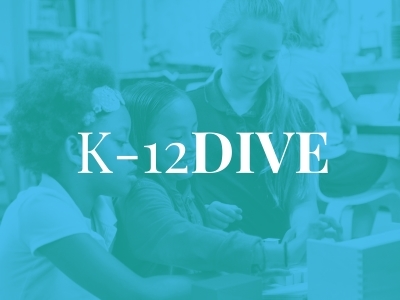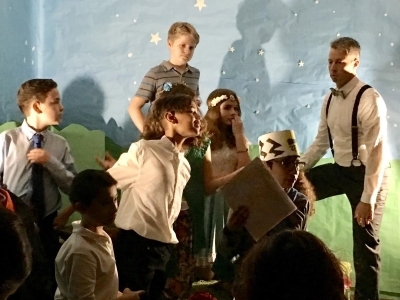Rethinking Education: Prioritizing Creativity and People over Grades and Rubrics
Topics

Today’s learners face an uncertain present and a rapidly changing future that demand far different skills and knowledge than were needed in the 20th century. We also know so much more about enabling deep, powerful learning than we ever did before. Our collective future depends on how well young people prepare for the challenges and opportunities of 21st-century life.
Why do students spend so much time solving problems that have already been solved? This student says it’s time to release students’ creativity and innovation in our classrooms.
I spent the 15 years of my life with a blindfold over my eyes. Today’s education system teaches you in a way that confines you to restrictions. People are judged based on grade over characteristic, dedicating their whole high school education to become a statistic, and nothing more. For me, Project Invent was an eye opening experience. It taught me to think in a way that went against everything I’d learned throughout my education. It was a way out, somewhere to truly be open, to make mistakes, be innovative—and not be judged or shut down because of it.
But I quickly came to a realization. It was like drowning, but still knowing how to swim. Project Invent was one of my four class periods. It made me aware of this freeness, this idea that I could make mistakes, to learn, and to truly enjoy what I was doing in school. But in my other classes, my mistakes were shunned, and I was stuck in an infinite loop of catchup. I was put into a situation where I was made aware of this unique, fresh way of thinking, but still being shut down, conforming to the current education system in my other classes.
So what exactly is Project Invent? When I get asked this, I usually say, “A nationwide engineering competition,” because it is the simplest way to explain it in a way that would be understood. Project Invent, while it is a nationwide engineering competition, is a program that allows students to express their creative freedom in a classroom environment. It engages and motivates students who haven’t been interested in STEM/technology fields or helps to nurture those who are already involved.
One of Project Invent’s key aspects is a community partner. When you think of a community partner, what do you think? Maybe it's someone in your neighborhood, or within, well, your community! For Project Invent, a community partner could be anyone from someone with underlying health issues, or a specific problem in their career, or just someone who has a story to tell! Students work with a community partner to design a technology based solution. But what exactly are they solving? One unique aspect of Project Invent is that students are able to define their own problem to solve, rather than solving a premade problem.
Fear of the Unknown
One thing that Project Invent helps teach to not only students, but also mentors and adults, is to accept the fear of the unknown. In today’s education system, people are afraid of the unknown because they are under the impression that “the unknown” is something that will harm them or that they’ll be negatively affected by it. Mentors, adults, are scared of Project Invent, simply due to the fact that they don’t really know what it is.
When I think of this, I think of this one, random Brain Games video I saw once, where a professional cyclist was challenged to ride a bike with reversed controls. At the beginning he struggled, but as time went on, he was eventually able to “rewire” his brain to ride it normally. But when he was told to ride a bike with normal controls afterwards, he struggled to do so. Project Invent is similar to this in that it “rewires” your way of thinking. The original mindset that the education system lays on you is to follow the rules, meet specific standards, and to conform. Project Invent, on the other hand, paves a way for students to open up, to truly be their authentic selves, to ask questions, and truly challenge themselves—rather than solving fake challenges that they are unmotivated to complete. This bike video resonates with me because I’ve had my controls reversed. I’ve been rewired to think in such a unique way that when the system today tries to tell me, “No, do it this way,” I struggle.
How Project Invent Rewired Me
For me, the beginning of the Project Invent process was slow and disjointed. Everyone around me was in a competitive mindset but we had little idea of what we were getting ourselves into. As the semester went on, though, our confusion began to unravel, making more sense throughout and toward the end of our ideation process. When I look back now, I find it so incredibly bizarre how the smallest little things grew into something that none of us expected to create. The unique thing about Project Invent is that you’re thrown into the process feet first, with no precognition, and no idea where you’re going to end up. A big factor that played into this was the fact that THERE WAS NO RUBRIC.
AAAAAAAAAAAAAAAAAAAAAAAAAAAAA!
I literally can’t stress this enough. Not having a rubric, or a set goal, is liberating! In most projects, essays, or assignments in school, there’s always an end goal, always something to recreate. In all of your “research in STEM” or “textual analysis of xyz” assignments, the only thing you’re doing is recycling and regurgitating information. The education system today has changed in such a way that teachers are expected to teach in specific ways, abide by specific rules, and grade with certain policies. The point of an instructor is to nurture and help students grow, not to demotivate them and create such an environment that pushes students—REAL PEOPLE, yes everyone, we are people, not NUMBERS—to characterize and motivate themselves by a grade rather than their talent and strengths.
Here are some of the things that Project Invent taught me:
- Dumb ideas are okay, and totally cool! (Anything from a magic carpet to an electric back brace that can fix nerves)
- Don’t be afraid to make mistakes—it’s part of the learning process and should be used to your advantage, not disadvantage.
- Don’t take negative feedback personally! See what works best for whatever it is that you’re doing. Use it to your advantage instead!
- Interviewing skills! I had to come up with relevant questions to ask when interviewing our community partner.
- Empathy! I learned how to connect with someone I’ve never met before and knew nothing about.
- Procrastination. This is a BIG ONE. And I mean big! I do it, your parents probably do it, even the best of us procrastinate (in fact, I’m procrastinating on writing this article! It was supposed to be done in March and it is now April!) And it’s okay! Seriously! It may not seem like it, but some of my brightest ideas have come in the last fleeting moments before a deadline. It’s alright to procrastinate, so don’t beat yourself down about it.
Before my Project Invent team met our community partner, we had little to no experience with cerebral palsy, or microcephaly. We had no idea how sophisticated the technologies behind sustaining life were, or the troubles that came with them. But through Project Invent, we were able to learn so much with the help of my mentor last year, Elizabeth Luna, who was truly one of a kind. None of us had any idea what we were doing! She was always optimistic, even though she was entirely new to the process as well. Here are some of the things that she did and pushed for, that I think really helped out!
- Don’t sugarcoat anything.
- Don’t be afraid to ask questions and seek the truth.
- Think in the abstract—don’t let others bring your ideas down.
Also, you should read more about her first Project Invent experience in an article she wrote last year!
The solution my team designed for our community partner is Syphon. As shown in this video, Syphon uses a temperature and humidity sensor, the DHT22, to accurately determine when a patient with a tracheostomy requires suctioning. The sensor determines if humidity and temperature have reached a certain threshold (dependent on patient or location, can be calibrated based on need). Syphon activates, inserting a suction tube into a patient’s trach for 10 seconds. The suctioning tube then retracts for 30 seconds. (This time may change depending on the patient’s condition or age). Video credit: Team Syphon.
Here’s what Project Invent looks like, compared to a normal engineering project that you might have to complete at school!
| Project Invent Project Timeline | Typical High School Engineering Project Timeline |
| empathize and connect! define a problem ideate fail repeat process fail repeat process find something that works fail repeat fail repeat find something that works again get more feedback fail again repeat again… a continuous, fluid cycle where ITS OKAY TO FAIL AND MESS UP (it's okay to not have an idea of where you’re going, or where you’ll end up.)final product, that could still be improved somehow! |
You’re given a problem to solve, with “creative freedom” for making a solution, but constrained:
Teacher: “Here’s a project. You have creative liberty.” Later in the semester… Teacher: “And now I want you to meet someone else’s standards, but don’t put too much effort in because bonus ideas won’t count.” |
Some of the things that I and many other students have heard from teachers who have assigned heavily structured projects:
- “Your idea doesn’t really matter, as long as it meets the requirements.”
- “There's no such thing as blowing the top [because someone before you made the roof].”
- “You’ll be graded on accuracy of content over creativity.”
The motivation for projects, rather than to learn, or explore, instead becomes to get a good grade. Students put more effort toward finding past solutions and recreating them, rather than making novel solutions to problems. Teachers have become numb to the system, giving up because they are required to have grades. The motivation shifts, becomes deflated, and slowly begins to dissipate.
Make Learning about People, not Numbers
“The grade doesn’t matter, it doesn’t affect you.” So I’ve been told. But in the end, my life in school always comes down to numbers. Always. Grades should not be a motivator for students. But they always end up being a major contributing factor to stress, motivation, and demotivation. This needs to change.
And I’m no expert, just someone who’s trying to make their way through the world. The education system today is ancient. It’s all about prestige and tradition. Society is changing. So why shouldn’t education change as well?
For Students:
Maybe you’ve struggled with this before, with school being all about grades and feeling like a “small fish in a VERY VERY big pond.” Maybe you’ve asked yourself the questions I’ve asked here. Maybe you haven't. This is a wakeup call. Open your eyes. Challenge things and stop conforming. Be the best you. Don’t try to fill someone else’s shell. Make your own shell instead.
For Teachers:
You might be frustrated by what I wrote. Or maybe you’re as frustrated as I am about what school has become about. If I were you, I would be frustrated too. Remember what I shared about feedback? Well this is my feedback. My true, pure, unfiltered thoughts, based on my experiences. Now I’m not saying everything you and other teachers have been doing is wrong. I’m asking you to wake up. The way you learned, 15, 20, 30, 40 years ago, probably won’t work for kids now. Please don’t take it personally. It's so difficult, but I ask that you try to put yourself, truly, to put yourself into the shoes of your students. Teachers, instructors, professors all play their own important roles, but I beg of you. Try to be a confused, lost student in your own class. You can change their experience and help them learn to become their own person instead of focusing everything on their grades.
For School Leaders:
Start going forward, not backward. Wake up. Listen to feedback, include students in discussions about what they ACTUALLY want to do. Bring students to staff meetings. Not the best students in your school, nor the worst. Just. Students.
Who truly knows what's best for the students? The board members, who do “research” for new learning tactics to teach kids without any input from the kids themselves? Or the kids? Who knows what they really want? So let them be a part of their own lives.
It’s not easy, believe me. Trying to make any sort of change is like trying to move a heavy boulder. But with enough force, you can move that rock! It takes time. But the system needs to change, so take the time to gather enough force to make it happen.
Image at top courtesy of Team Syphon: The design for Syphon was inspired by a plant.




